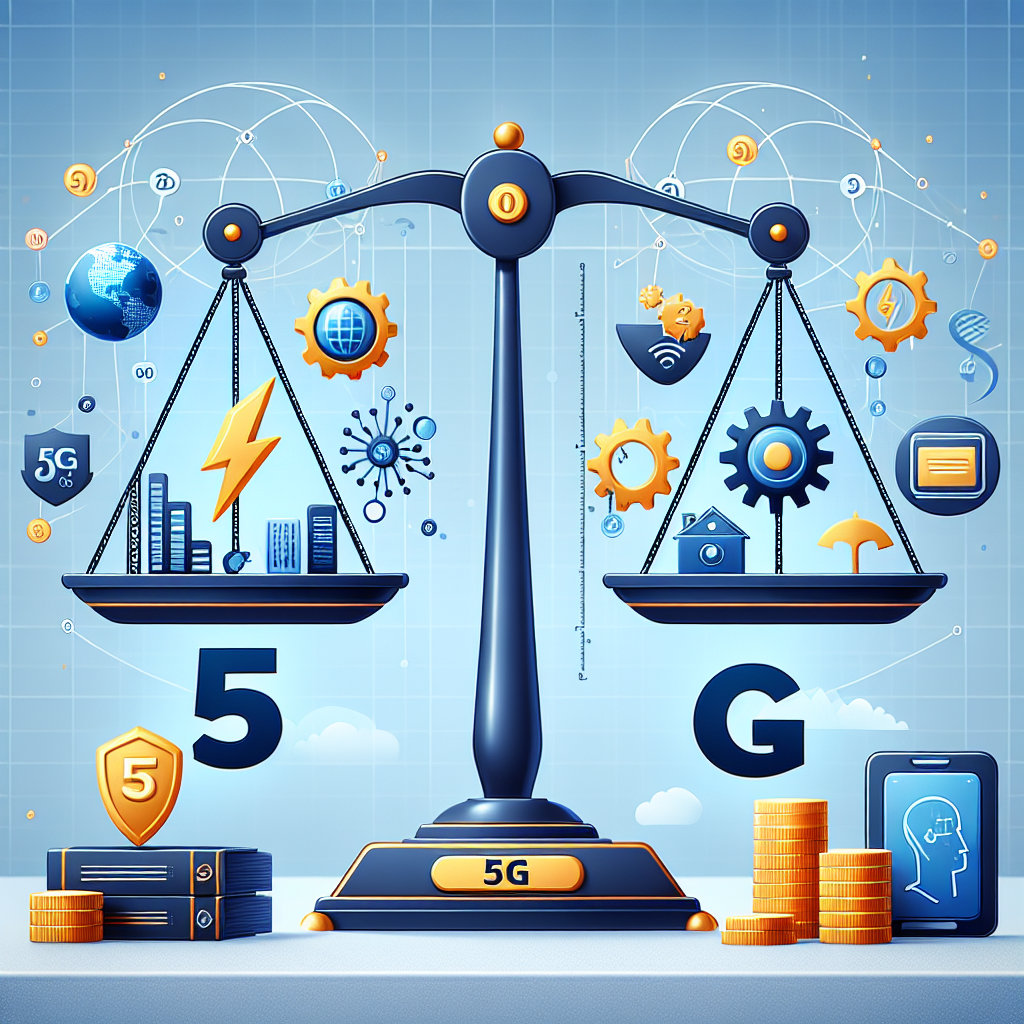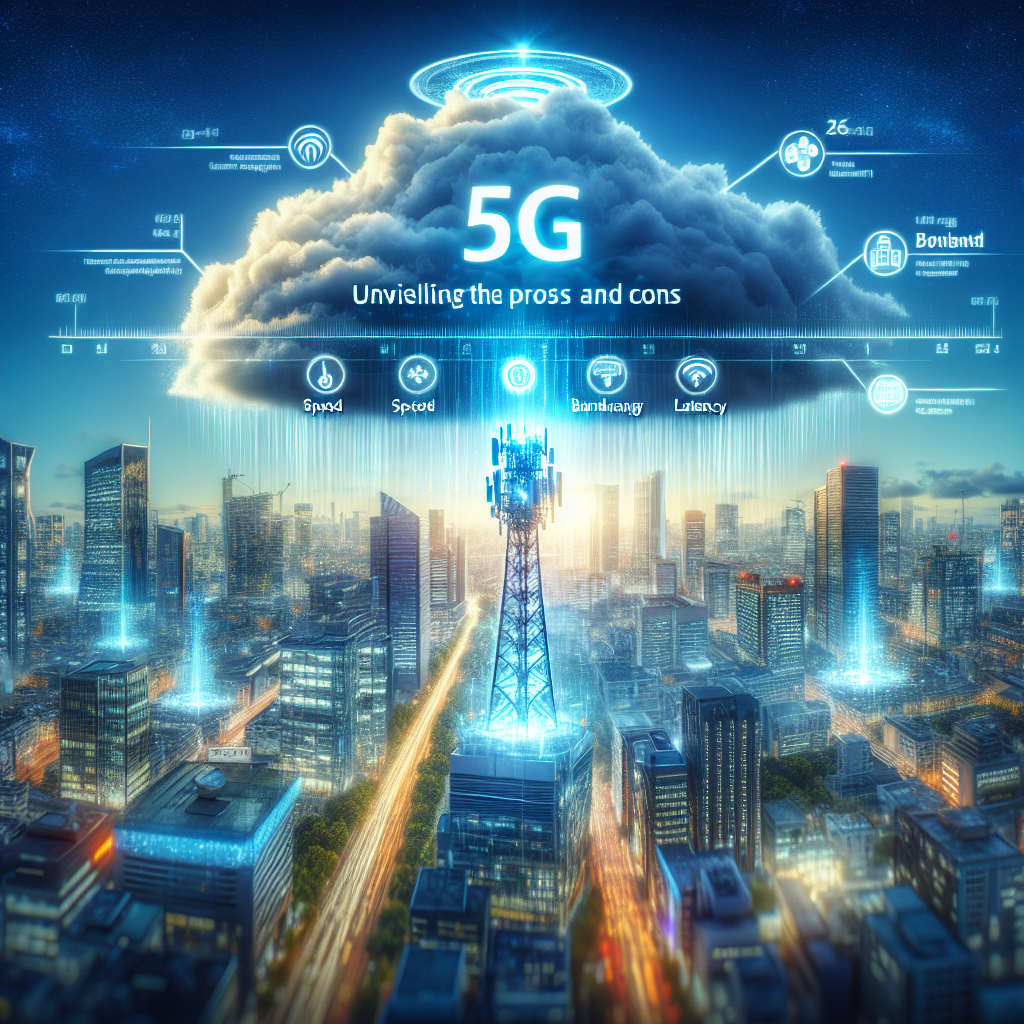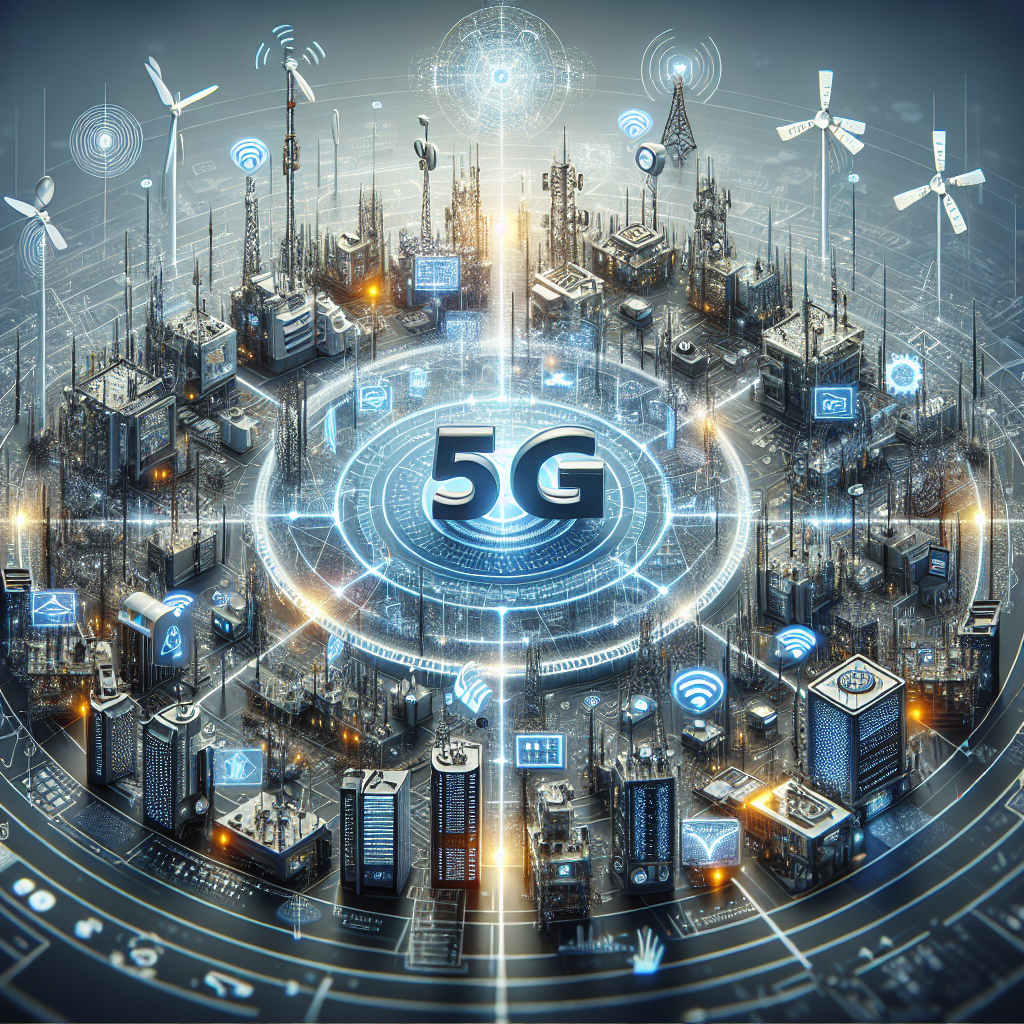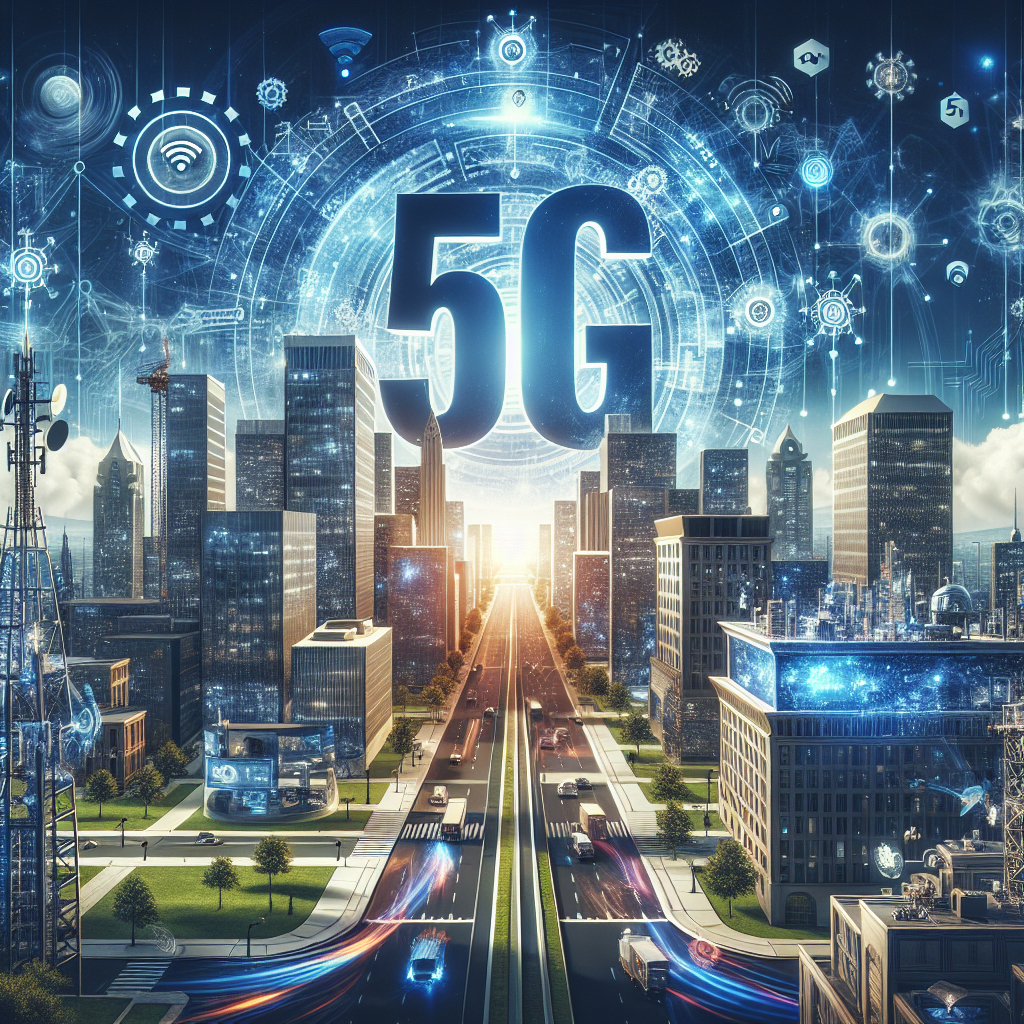In the era of fast-paced technological advancements, 5G technology has emerged as a game-changer, promising lightning-fast internet speeds and enhanced connectivity. This comprehensive analysis delves into the myriad advantages and disadvantages of this cutting-edge technology, shedding light on its potential benefits and drawbacks. From revolutionizing communication and entertainment to enabling the Internet of Things (IoT) and smart cities, 5G has the power to redefine our digital landscape. However, concerns over privacy, security, and health risks loom large, raising questions about the long-term impact of 5G on society. Join us on a journey to uncover the truths behind 5G technology.
Understanding 5G Technology

5G technology, the fifth-generation cellular network, represents a significant advancement in telecommunications technology. It is designed to provide faster data speeds, increased network capacity, and lower latency compared to its predecessor, 4G. The primary goal of 5G is to enhance connectivity and support the growing number of devices that require internet access.
Definition of 5G technology:
– 5G technology refers to the next generation of mobile networks that promise to revolutionize communication by offering higher data speeds and improved reliability.
– It operates on higher-frequency radio waves, allowing for faster data transmission and reduced lag time.
Evolution from 4G to 5G:
– The transition from 4G to 5G involves the deployment of new infrastructure, including small cells and massive MIMO technology, to support the increased demand for data.
– 5G networks utilize advanced technologies like beamforming and network slicing to optimize performance and provide customized services to users.
– Compared to 4G, 5G offers higher bandwidth, enabling more devices to connect simultaneously without compromising speed or quality.

Advantages of 5G Technology
Enhanced Speed and Bandwidth
-
Comparison with previous generations
5G technology offers significantly faster speeds compared to its predecessors, particularly 4G LTE. While 4G LTE can provide speeds of up to 100 Mbps, 5G is expected to reach peak speeds of 10 Gbps or even higher. This leap in speed is attributed to the utilization of higher frequency bands and advanced antenna technologies in 5G networks. The increased speed of 5G is crucial for supporting the growing demand for data-intensive applications such as virtual reality, augmented reality, and ultra-high-definition video streaming. -
Impact on data transfer rates
The enhanced speed of 5G technology translates to quicker data transfer rates, enabling users to download and upload large files in a fraction of the time it takes on 4G networks. For instance, a high-definition movie that may take minutes to download on a 4G connection can be downloaded in mere seconds using 5G. This rapid transfer of data is not only beneficial for individual users but also for businesses that rely on real-time communication and large-scale data processing.
Low Latency
Definition of Latency in Networking
In the realm of networking, latency refers to the time it takes for data to travel from its source to its destination. It is essentially the delay between the sending and receiving of information. Low latency signifies minimal delay, leading to faster communication and data transfer.
Applications Benefiting from Low Latency with 5G
-
Real-time Gaming: Gamers require instantaneous responses to their actions for a seamless gaming experience. 5G’s low latency ensures minimal lag, providing gamers with a more responsive and immersive gameplay environment.
-
Autonomous Vehicles: Self-driving cars rely on quick data transmission to make split-second decisions. With 5G technology’s low latency, vehicles can communicate with each other and their surroundings in real-time, enhancing safety and efficiency on the roads.
-
Telemedicine: In healthcare, low latency is crucial for telemedicine applications where doctors need to remotely diagnose and treat patients. 5G enables high-quality video calls and real-time monitoring, improving the efficiency and effectiveness of virtual healthcare services.
In conclusion, the low latency offered by 5G technology revolutionizes various sectors by enabling faster and more responsive communication and data transfer, leading to enhanced user experiences and increased operational efficiency.
Support for IoT and Smart Devices
The integration of Internet of Things (IoT) with 5G technology is a game-changer in the realm of connectivity. With the ultra-fast speeds and low latency offered by 5G networks, IoT devices can communicate seamlessly and instantaneously, enhancing efficiency and productivity across various industries.
Advantages of 5G for smart devices and home automation:
-
Increased data transfer speeds: 5G technology enables rapid data transfer between IoT devices, allowing for quick response times and real-time data processing. This is particularly beneficial for applications such as smart home devices, where immediate actions are required.
-
Low latency: The minimal latency of 5G networks ensures that smart devices can communicate with each other swiftly, leading to improved performance and reduced lag time. This is crucial for applications that rely on instant feedback, such as autonomous vehicles and industrial automation.
-
Enhanced connectivity: 5G networks offer greater capacity and bandwidth, allowing a larger number of IoT devices to connect simultaneously without compromising speed or quality of service. This scalability is vital for the widespread adoption of IoT technologies in smart cities and large-scale deployments.
-
Energy efficiency: By optimizing data transmission and minimizing idle time, 5G technology helps IoT devices operate more efficiently, conserving energy and prolonging battery life. This is crucial for devices that are constantly connected and require long-lasting power sources.
In conclusion, the support for IoT and smart devices provided by 5G technology opens up a world of possibilities for innovation and advancement in various sectors. The combination of high-speed connectivity, low latency, and enhanced efficiency makes 5G a catalyst for the proliferation of IoT applications and the realization of a truly interconnected world.
Improved Network Reliability
Advantages of 5G Technology
The improved network reliability brought about by 5G technology is a significant advancement that has transformative implications for various sectors. This enhanced reliability is primarily due to the integration of redundancy and network resilience mechanisms within the 5G infrastructure.
-
Redundancy and Network Resilience in 5G: Unlike previous generations of wireless technology, 5G networks are designed with a higher level of redundancy, which means that data can be rerouted through multiple paths in case of network congestion or failure. This redundancy minimizes the risk of service disruptions and ensures a more consistent and reliable connection for users.
-
Benefits for Critical Applications and Industries: The enhanced network reliability of 5G is particularly beneficial for critical applications and industries that rely on uninterrupted connectivity, such as healthcare, transportation, and public safety. For example, in healthcare settings, 5G’s improved reliability can support real-time remote monitoring of patients and enable quick access to medical records, leading to more efficient and effective patient care. Similarly, in the transportation sector, reliable 5G connectivity can enhance the performance of autonomous vehicles by ensuring seamless communication between vehicles and infrastructure, thereby improving safety and efficiency on the roads.
In conclusion, the improved network reliability offered by 5G technology not only enhances the overall user experience but also unlocks new possibilities for innovative applications and services across various sectors.
Potential for Innovation
- Exploration of new technologies with 5G
- 5G technology opens up possibilities for the development of cutting-edge technologies such as the Internet of Things (IoT), artificial intelligence (AI), and augmented reality (AR).
- The high-speed, low-latency nature of 5G networks enables real-time data processing and analysis, paving the way for innovative applications and services.
-
Industries can leverage 5G to create smart cities, autonomous vehicles, and connected devices that enhance efficiency and improve quality of life.
-
Impact on industries like healthcare, automotive, and entertainment
- In the healthcare sector, 5G facilitates remote surgeries, telemedicine consultations, and patient monitoring through wearable devices, improving access to healthcare services.
- Automotive companies can utilize 5G for vehicle-to-vehicle communication, enabling safer and more efficient transportation systems with features like collision avoidance and traffic management.

- The entertainment industry benefits from 5G’s ability to deliver high-quality, immersive experiences through virtual reality (VR) gaming, live streaming of events, and on-demand content with minimal lag.
Disadvantages of 5G Technology
Infrastructure Challenges
- Deployment Costs and Requirements for 5G Infrastructure
The implementation of 5G technology requires a significant investment in infrastructure. Telecom companies need to upgrade their existing network equipment and build new infrastructure to support the higher frequencies and data speeds of 5G. This includes installing more cell towers, small cells, and fiber optic cables to ensure reliable coverage and low latency. The cost of this infrastructure upgrade can be prohibitive for some companies, especially smaller ones, leading to delays in the rollout of 5G services.
- Accessibility Issues in Rural and Remote Areas
One of the major challenges of 5G deployment is ensuring widespread coverage, especially in rural and remote areas. The high-frequency waves used in 5G technology have a shorter range compared to 4G, making it more difficult to provide comprehensive coverage in sparsely populated regions. This can result in a digital divide where urban areas enjoy the benefits of 5G connectivity while rural areas are left with slower internet speeds. Additionally, the cost of deploying 5G infrastructure in remote areas with challenging terrain can further exacerbate accessibility issues.
Security Concerns
Disadvantages of 5G Technology
The implementation of 5G technology brings forth a myriad of security concerns that must be addressed to mitigate potential risks and vulnerabilities.
-
Vulnerabilities in 5G networks: One of the primary security concerns with the deployment of 5G technology is the presence of vulnerabilities within the network infrastructure. These vulnerabilities could be exploited by malicious actors to gain unauthorized access to sensitive data or disrupt critical services. The complex nature of 5G networks, with a larger attack surface and interconnected devices, increases the likelihood of security breaches.
-
Potential threats and cybersecurity risks: The high-speed and low-latency capabilities of 5G networks also introduce new potential threats and cybersecurity risks. For instance, the increased use of Internet of Things (IoT) devices in a 5G environment opens up the possibility of large-scale cyberattacks targeting these interconnected devices. Additionally, the reliance on virtualized network functions in 5G architecture can create new entry points for cyber threats, leading to data breaches and network downtime.
Addressing these security concerns requires a proactive approach from network operators, service providers, and regulatory bodies to implement robust security measures, encryption protocols, and continuous monitoring to safeguard 5G networks from malicious activities.
Health Implications
-
Debate surrounding the health effects of 5G radiation: The rollout of 5G technology has sparked a heated debate among scientists, health professionals, and the general public regarding the potential health risks associated with increased exposure to electromagnetic radiation. While some experts argue that the higher frequency millimeter waves used in 5G networks could lead to adverse health effects such as cancer and genetic damage, others believe that the levels of radiation emitted by 5G are within safe limits set by regulatory bodies.
-
Studies and research on the impact of 5G on human health: Several studies have been conducted to investigate the potential health implications of 5G technology. These studies have focused on a wide range of health concerns, including the effects of 5G radiation on cellular function, DNA damage, and the risk of developing various health conditions. While some research suggests that 5G radiation may have detrimental effects on biological systems, other studies have found no conclusive evidence linking 5G technology to adverse health outcomes.
Compatibility Issues
- Interoperability challenges with existing devices
The rollout of 5G technology brings with it the challenge of ensuring seamless compatibility with the vast array of existing devices in use today. Many older devices may not be equipped to handle the higher frequencies and speeds associated with 5G networks, leading to potential connectivity issues for users who have not upgraded their devices. This interoperability challenge highlights the need for manufacturers to develop devices that can support both 4G and 5G networks to bridge the technological gap and ensure a smooth transition for consumers.
- Transition period from older networks to 5G
Another significant compatibility issue associated with 5G technology is the transitional phase from older networks to the new 5G infrastructure. During this period, there may be areas where 5G coverage is not yet available, leading to potential service disruptions or inconsistencies for users who are moving between areas with different network capabilities. This transition period requires careful planning and coordination among telecommunications companies to minimize disruptions and ensure a seamless migration to the advanced capabilities offered by 5G technology.
Environmental Impact
- Energy consumption of 5G infrastructure
The deployment of 5G technology comes with a significant increase in energy consumption compared to previous generations. The densification of networks with small cells and the need for more data processing centers to support the higher speeds and lower latency of 5G all contribute to this heightened energy demand. This surge in energy consumption raises concerns about the environmental impact, especially considering the global push towards sustainability and reducing carbon footprints.
- Sustainability considerations in the expansion of 5G networks
As 5G networks continue to expand globally, there is a growing need to address sustainability considerations. The manufacturing, installation, and maintenance of 5G infrastructure involve the use of resources and materials that can have adverse effects on the environment. From the extraction of raw materials for hardware components to the disposal of outdated equipment, each stage of the 5G network lifecycle must be carefully managed to minimize its environmental footprint. Additionally, the electronic waste generated by the rapid turnover of devices in the 5G ecosystem poses a challenge in terms of recycling and proper disposal, further exacerbating the environmental impact of this advanced technology.
FAQs
What are the advantages of 5G technology?
5G technology offers numerous advantages such as higher network speeds, increased bandwidth, lower latency, and improved connectivity. This technology enables faster data transfer rates and supports a higher number of devices to be connected simultaneously. Additionally, 5G technology can enhance the performance of various applications including virtual reality, augmented reality, and IoT devices.
What are the disadvantages of 5G technology?
One of the main disadvantages of 5G technology is the high cost associated with upgrading existing infrastructure to support the new technology. Additionally, there are concerns about the potential health risks associated with increased exposure to higher frequency radio waves. Some critics also worry about the reliability and security of 5G networks, as they may be more susceptible to cyberattacks compared to previous generations of wireless technology.
How will 5G technology impact industries?
5G technology is expected to revolutionize various industries by enabling innovative applications and services. Industries such as healthcare, transportation, manufacturing, and entertainment stand to benefit from the increased speed, bandwidth, and connectivity that 5G technology offers. For example, 5G technology can improve patient care delivery in healthcare settings, optimize logistics and supply chain management in transportation, and enhance user experiences in the entertainment industry with immersive content.
Will 5G technology replace 4G?
While 5G technology is set to become the new standard for wireless communication, it is unlikely that it will completely replace 4G networks in the near future. 4G networks will continue to be utilized, especially in areas where 5G coverage is not yet available. Both technologies are expected to coexist for some time, with 5G gradually becoming more widespread as infrastructure and adoption rates increase.
How will 5G technology impact consumers?
Consumers can expect to benefit from 5G technology in various ways, such as faster download and upload speeds, improved streaming quality, and better connectivity for smart devices. With 5G technology, consumers will be able to enjoy seamless experiences while using bandwidth-intensive applications like gaming, video streaming, and virtual meetings. Additionally, 5G technology will enable the widespread adoption of IoT devices, leading to a more connected and efficient lifestyle for consumers.


